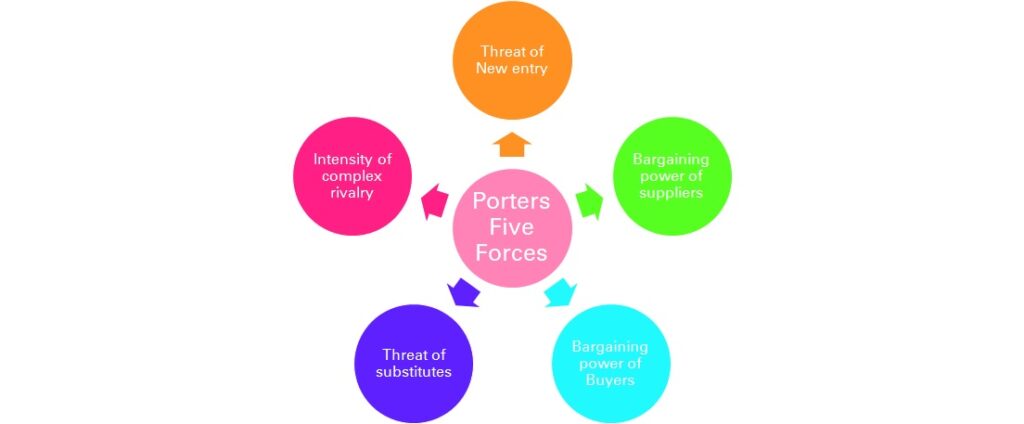In the ever-evolving world of business, understanding the competitive forces at play is crucial for success. One powerful framework that helps analyze industry competition is Porter’s Five Forces. Developed by Michael E. Porter, a renowned strategy expert, this framework provides a comprehensive analysis of the forces that shape an industry’s attractiveness and profitability. In this blog post, we will delve into the details of Porter’s Five Forces and explore captivating examples that highlight their significance in different industries.

The threat of New Entrants
The first force, the threat of new entrants, examines how easily new competitors can enter an industry. Factors such as barriers to entry, economies of scale, brand loyalty, and government regulations influence this force. For example, the airline industry is characterized by high barriers to entry due to significant capital requirements and strict regulatory approvals. However, the online retail industry has relatively lower barriers, resulting in intense competition from new players like Amazon.
Bargaining Power of Suppliers
The second force, the bargaining power of suppliers, focuses on the control suppliers have over the inputs required by an industry. This power is determined by factors such as supplier concentration, differentiation of inputs, and the availability of substitutes. Take the automobile manufacturing industry, where a few global suppliers hold significant power due to their specialized components, giving them the ability to influence pricing and terms.
Bargaining Power of Buyers
The third force, the bargaining power of buyers, examines the influence customers have on an industry. Factors such as buyer concentration, switching costs, and product differentiation affect this force. Consider the smartphone industry, where tech-savvy customers have a high level of bargaining power due to the abundance of options available, leading to intense price competition among smartphone manufacturers.
Threat of Substitutes
The fourth force, the threat of substitutes, analyzes the availability of alternative products or services that can satisfy customer needs. This force is influenced by factors such as price-performance trade-offs, switching costs, and customer loyalty. The soft drink industry faces a significant threat of substitutes from healthier alternatives like bottled water, juices, and energy drinks, as consumers become more health conscious.
The Intensity of Competitive Rivalry
The fifth force, the intensity of competitive rivalry, assesses the level of competition among existing firms in an industry. Factors such as market concentration, industry growth rate, and product differentiation impact this force. The fast-food industry is characterized by fierce competition among major players like McDonald’s, Burger King, and Wendy’s, resulting in constant price wars, aggressive marketing, and new product launches.
Conclusion
Porter’s Five Forces provide a powerful framework for analyzing industry dynamics and understanding the competitive forces at play. By examining the threat of new entrants, bargaining power of suppliers and buyers, threat of substitutes, and intensity of competitive rivalry, businesses can gain valuable insights into their industry’s attractiveness and devise effective strategies to stay ahead. Understanding these forces enables organizations to identify opportunities, mitigate risks, and create sustainable competitive advantages in a rapidly changing business landscape.
Remember, Porter’s Five Forces should be used in conjunction with other strategic tools and frameworks to gain a holistic understanding of the business environment. By leveraging this framework and adapting it to specific industries, businesses can make informed decisions, drive innovation, and navigate the competitive landscape successfully.
7 thoughts on “Porter’s Five Forces: Unveiling Competitive Dynamics in Business”